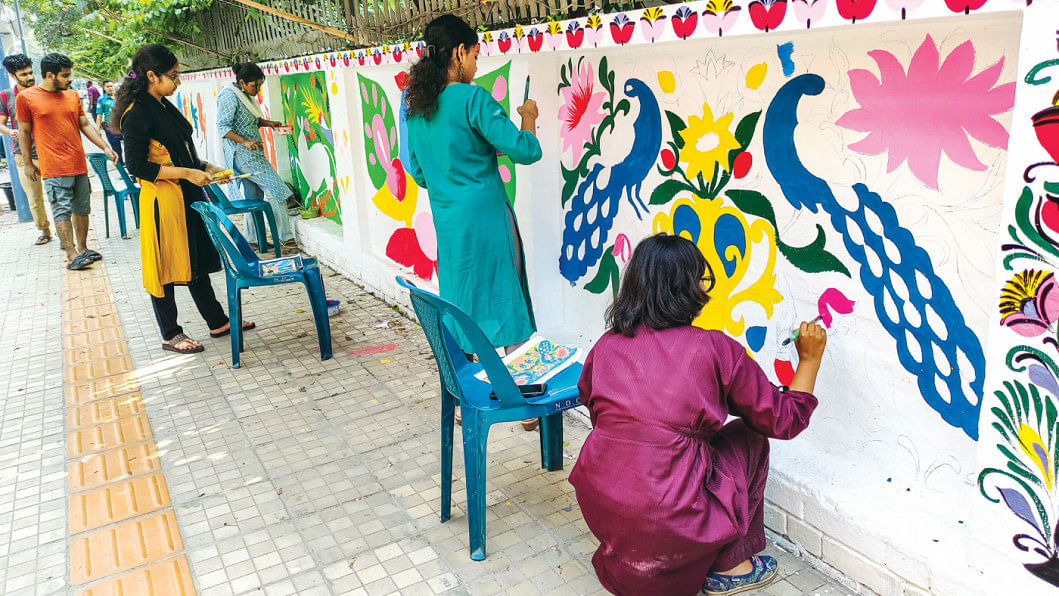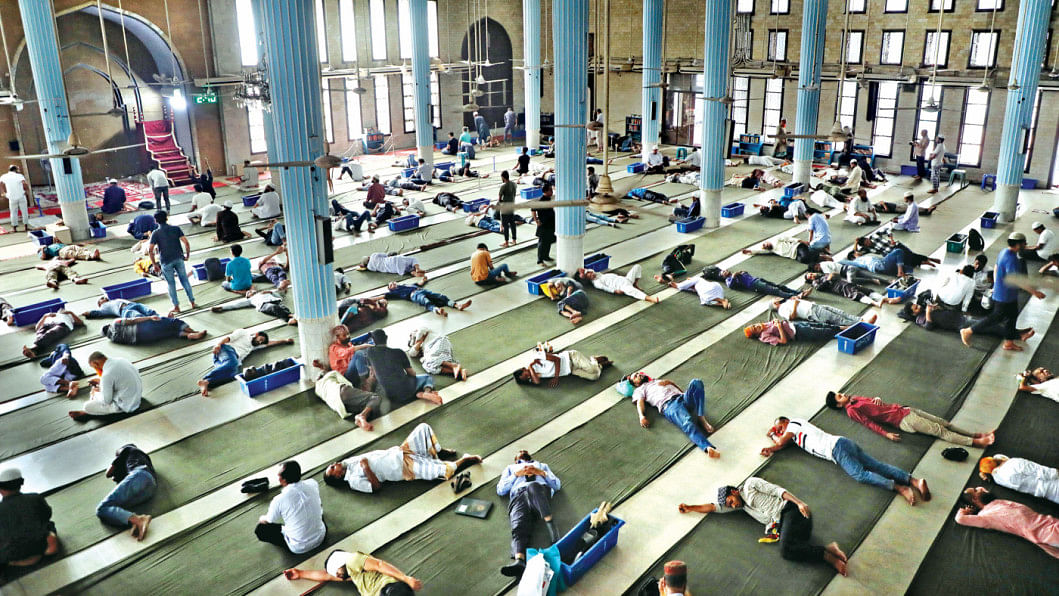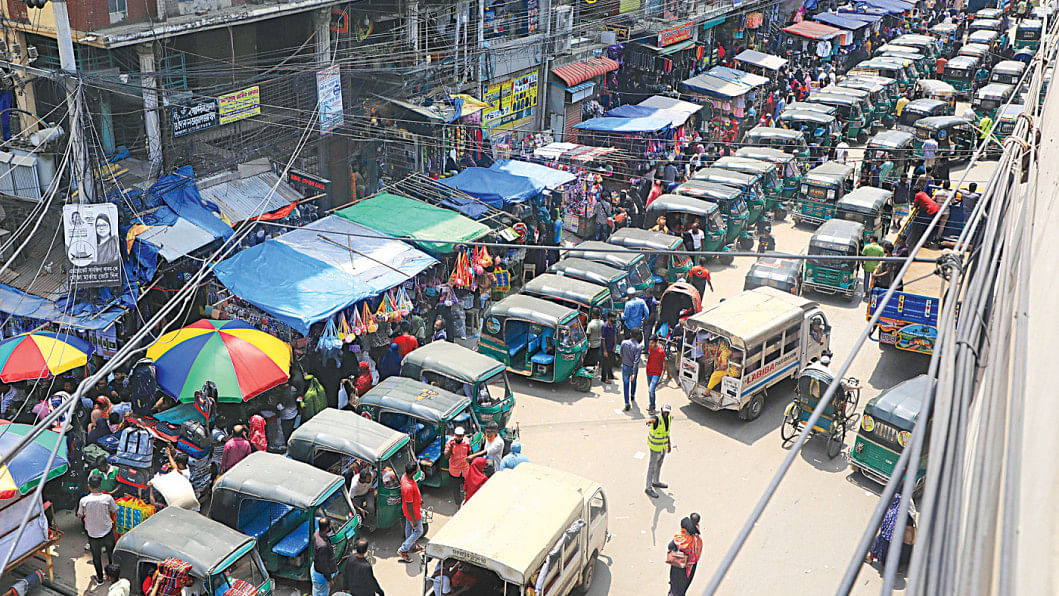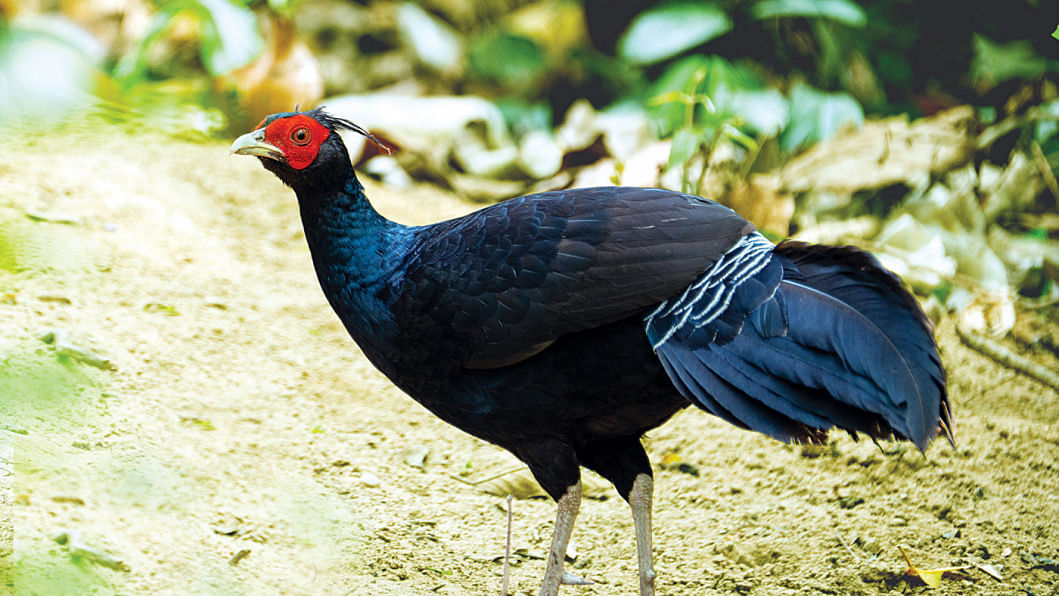Today's Gallery (2024.04.05)
Students of Dhaka University’s Fine Arts faculty were busy painting colourful Baishakhi motifs on the walls of Charukola yesterday, as they prepare to welcome the Bangla New Year on April 14.
PHOTO: RASHED SHUMON
Devotees lying down on the floor of the Baitul Mukarram National Mosque in the capital to get some respite from the sweltering heat. The vast prayer hall, with verandahs and a tiled floor, can be a cool and safe sanctuary for those who need a break from the scorching sun. The photo was taken yesterday. PHOTO: PALASH KHAN
Hawkers and CNG-run three-wheelers occupy almost half of this one-way road in Dhaka’s Jurain Rail Gate area, narrowing the space for other vehicles. This often leads to snarl-ups in the area. The photo was taken around 1:00pm yesterday. Photo: Amran Hossain
JEWELS OF THE JUNGLE:
A male Kalij pheasant spotted roaming the grounds at Chittagong University recently. These hen-sized birds can be found in forests and thickets in the Himalayan foothills, from Nepal and Pakistan to Western Thailand. They prefer mostly forested areas in hilly or mountainous regions, which is why they can be seen often in Sylhet and Chattogram hill tracts. While the males are considered strikingly beautiful due to the navy blue-black plumage and a glaring red around the eyes, the females are more mundane brownish-grey. Like most pheasants, the Kalij pheasant is also omnivorous, with a diverse menu of plants and small insects or reptiles. Considered generally sedentary, these birds are known to perform only seasonal movements for food or mating and roost on trees. However, if frightened, not only can they fly but can scurry away on foot from danger. Though the Kalij pheasant is in the “Least Concern” category of the IUCN, there have been reports of decline in their populations in many areas due to hunting and habitat loss.
Photo: Noble Chakma




















